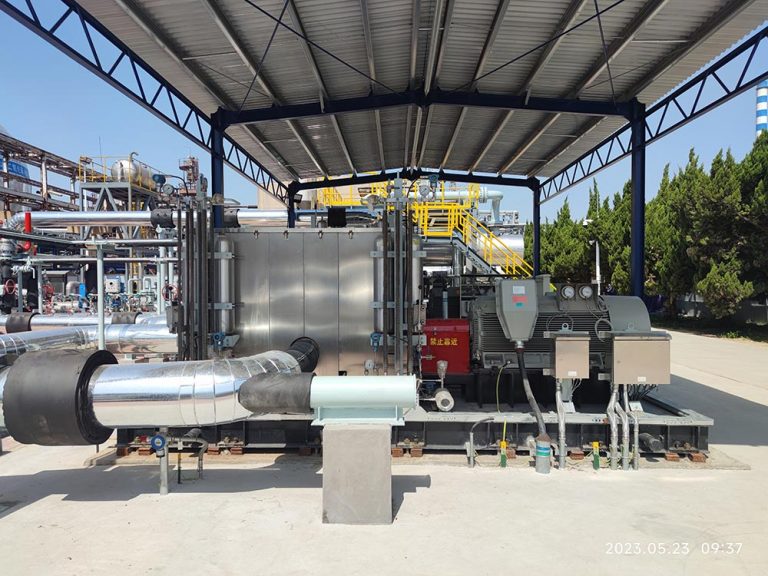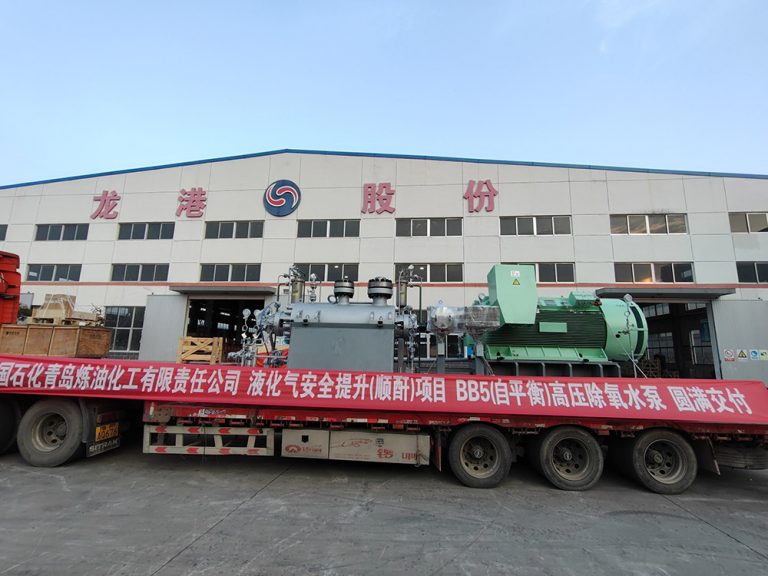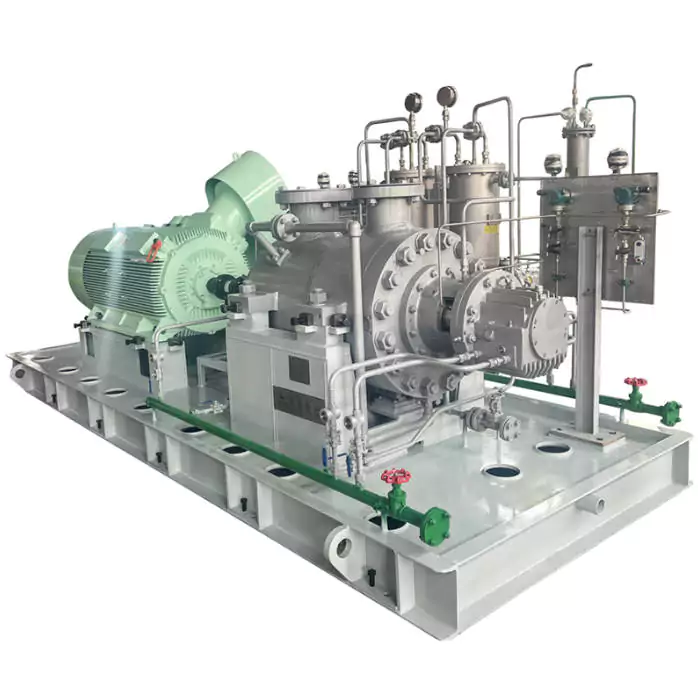Centrifugal pumps are essential components in various industries, providing a reliable means of transporting fluids efficiently. They operate by converting mechanical energy into kinetic energy, and subsequently into flow energy, making them ideal for a wide range of applications. It is crucial to learn about the inner workings and functions of centrifugal pumps for anyone involved in engineering, maintenance, or the management of fluid systems. This article explores the key functions of centrifugal pumps, including how they work, the materials used in their construction, and the advantages they offer in operational settings.
How Do Centrifugal Pumps Work?
Centrifugal pumps utilize rotational energy to move fluids. The design typically comprises an impeller, which rotates within a casing. As the impeller spins, it creates a low-pressure area at the eye of the impeller. This drop in pressure enables the surrounding fluid to flow into the pump. Once inside, the fluid is subjected to centrifugal force, which propels it outward toward the discharge. The design of the volute casing aids this process by converting the kinetic energy of the fluid into pressure, which facilitates effective fluid transport.
The impeller’s blades are expertly crafted to optimize fluid dynamics, ensuring efficient flow through the pump while minimizing turbulence and energy loss. High-quality centrifugal pumps also integrate features like wear rings and seal chambers to enhance performance and durability. By selecting the right impeller design and speed, operators can achieve various flow rates and heads, tailoring the pump’s performance to specific system requirements.
What Materials Are Used in Centrifugal Pumps?
The materials used in centrifugal pumps are critical to their performance and longevity. Common materials include stainless steel, cast iron, and various alloys, selected based on the intended application and the type of fluid being pumped. For aggressive or corrosive fluids, specialized materials such as titanium or high-performance polymers may be employed.
In addition to the materials of the casing and impeller, attention must also be paid to internal components such as bearings and seals. For instance, mechanical seals are often preferred for their reliability in preventing leaks, particularly in high-pressure applications. The construction materials, coupled with correct design positioning, contribute significantly to the pump’s efficiency, ease of maintenance, and operational lifespan.
What Are the Main Functions of a Centrifugal Pump?
Centrifugal pumps serve multiple critical functions across diverse applications. The primary function is to transport fluids from one location to another effectively. They are utilized in industries like petrochemicals, water treatment, HVAC, agriculture, and food processing, each requiring specific flow rates and pressures.
Additionally, centrifugal pumps facilitate cooling processes in various systems, ensuring that equipment operates within safe temperature limits. In chemical processes, these pumps maintain the required flow rates essential for reactions to proceed correctly. By understanding the needs of their systems, engineers can select centrifugal pumps that deliver the required performance specifications.
How Do Centrifugal Pumps Generate Flow?
Flow generation in centrifugal pumps relies on the high-speed rotation of the impeller. When the impeller spins, it imparts kinetic energy to the fluid, pushing it towards the pump casing’s outlet. The flow can be influenced by several factors, including the pump’s rotational speed, the diameter of the impeller, and the fluid’s viscosity.
The curvature of the volute casing helps guide the fluid out of the pump while converting kinetic energy into pressure energy, enabling smooth and efficient discharge. The interaction between the impeller and volute is crucial for achieving optimal flow rates, and engineering adjustments can be made to cater to varying operational demands.

How Is Pressure Developed in a Centrifugal Pump?
Pressure development in a centrifugal pump is a direct result of converting kinetic energy into pressure energy. As the impeller accelerates the fluid outward, the design of the volute casing shapes this increase in velocity into pressure. The pressure produced by the pump relies heavily on the fluid’s density, the impeller’s rotational speed, and the overall design of the pump.
By focusing on optimizing these parameters, engineers can effectively design pumps that deliver the desired pressure for a given application. Various testing methods, including performance curves and pressure tests, ensure that centrifugal pumps meet operational standards and requirements.
What Are the Operational Advantages of Using Centrifugal Pumps?
Centrifugal pumps offer distinct operational advantages that make them a popular choice in many industries. One key advantage is their ability to handle large volumes of fluid at varying flow rates. When designed with the correct specifications, centrifugal pumps can operate continuously without requiring frequent maintenance or adjustments.
Why Are Centrifugal Pumps Preferred for Continuous Operation?
Centrifugal pumps are well-suited for continuous operation due to their simple design and efficiency. The lack of complex internal mechanisms, as seen in some other pump types, contributes to their low maintenance requirements and reliability. Moreover, they can be operated at a range of speeds, enabling adaptability to differing system demands without the need for redesign.
In many industrial processes, the consistent flow provided by centrifugal pumps is vital for maintaining desired operational conditions. This reliability enhances productivity, reduces downtime, and minimizes operational costs.
How Do Centrifugal Pumps Handle Different Liquid Viscosities?
Centrifugal pumps can accommodate a range of liquid viscosities, making them versatile in their application. However, their efficiency may vary depending on the viscosity of the fluid being pumped. For low-viscosity fluids, centrifugal pumps generally perform well, providing high flow rates and reduced energy consumption.
When dealing with more viscous fluids, adjustments may be necessary; for example, using larger impellers or different casing designs can improve efficiency. In situations where the viscosity is significantly higher, auxiliary technologies such as gear pumps may be integrated with centrifugal pumps to create hybrid systems that leverage the strengths of both pump types.
In conclusion, understanding the key functions of a centrifugal pump is crucial for effective fluid management across various industries. With their ability to generate flow and develop pressure through efficient design, these pumps offer reliable transport and processing of a wide range of fluids. By selecting the appropriate materials, configurations, and operational strategies, operators can harness the full potential of centrifugal pumps in their applications.
Longgang’s Centrifugal Pumps Application
Longgang’s centrifugal pumps have established a prominent position in various applications, especially in complex industrial environments. They excel in tasks that demand high reliability and performance, such as in petrochemical processing, where they transport corrosive and viscous liquids. Furthermore, their design accommodates operational challenges associated with high temperatures and pressure, making them suitable for critical applications that require precise control of fluid dynamics. Longgang’s product line illustrates a commitment to optimizing performance through innovative design, effectively addressing industry needs with tailored solutions.
How Can You Maintain and Troubleshoot a Centrifugal Pump?
Maintaining and troubleshooting a centrifugal pump is essential for ensuring optimal performance and longevity. Regular inspections and adherence to maintenance schedules help identify potential issues before they escalate into significant problems. Effective maintenance includes monitoring and replacing seals and bearings periodically to prevent leaks and mechanical failures. Additionally, checking for wear on impellers and volute casings is crucial, as these components critically influence the pump’s operational efficiency and effectiveness.
What are the Recommended Maintenance Practices?
Recommended maintenance practices for centrifugal pumps involve several proactive measures. Firstly, operators should establish and follow a routine maintenance schedule that includes thorough inspections and testing of pump components to identify wear and tear. Cleaning the pump and its components can help prevent clogging and improve overall performance, particularly when operating in environments with particulates or corrosive substances. Furthermore, lubrication of bearings and seals reduces friction, extending the service life of these critical components.
Regular monitoring of vibration and noise levels can also provide early indicators of underlying issues, allowing for prompt corrective actions. Input from operators on observed performance deviations can aid in diagnosing potential failures, ensuring that pumps operate within their designed parameters. Documenting maintenance actions and results creates a comprehensive history that can guide future maintenance strategies, supporting continuous improvement.
How to Identify Common Operational Issues?
Identifying common operational issues within centrifugal pumps requires an understanding of key performance indicators and symptoms. Vibration analysis is a valuable tool that can help detect misalignment, imbalance, or bearing wear, each of which can lead to significant operational challenges. Unusual noises, including grinding or thumping, may also indicate mechanical failures, necessitating immediate investigation. Monitoring parameters such as flow rates, pressure levels, and temperature can provide insights into operational efficiency.
If a centrifugal pump exhibits reduced flow rates or discharge pressure, it may suggest blockages, worn impeller blades, or issues with suction conditions, such as air entrainment. Recognizing these early warning signs and conducting a systematic troubleshooting process allows operators to address issues effectively before they compromise the pump’s performance or lead to system failures. Consistent training for operational personnel fosters a knowledgeable approach to recognizing and responding to operational anomalies.
In summary, understanding the common applications and maintenance practices concerning centrifugal pumps deepens the user’s knowledge about these essential machines. The ability to identify and act on operational issues can lead to dramatic improvements in system performance, ensuring processes run smoothly and efficiently across various sectors. By adhering to proper maintenance protocols and leveraging operational insights, facility managers can extend the lifespan of their centrifugal pumps while maintaining efficiency and reliability in fluid handling processes.








